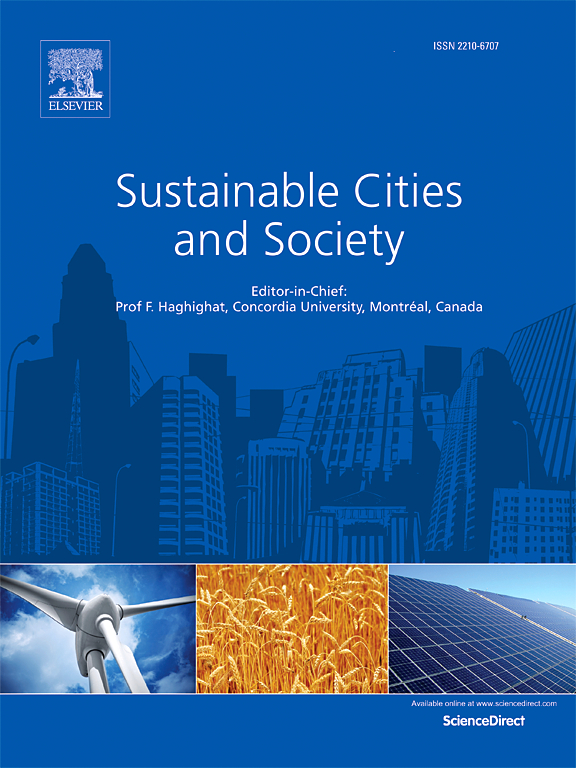The association of apparent temperature with fetal growth: A birth cohort study in Beijing, China
IF 10.5
1区 工程技术
Q1 CONSTRUCTION & BUILDING TECHNOLOGY
引用次数: 0
Abstract
The physiological characteristics of pregnant women and fetuses make them more susceptible to unfavorable temperature conditions. This cohort study in Beijing, China, involved 23,182 singleton pregnant women. Apparent temperature (AT; a composite index of temperature and relative humidity) matched to the participants' residential addresses. Fetal growth was assessed using ultrasound parameters, transformed into gestational-age- and gender-adjusted standard score (Z-score). Association between AT and fetal growth analysed by mixed linear models showed that both high and low AT exposures significantly negatively affected fetal head, abdominal and femur length development and significantly decreased fetal weight in utero. For instance, at ≤23 weeks, both lower and higher AT were associated with a decrease in abdominal circumference (AC) Z-scores by 0.16 (95 % confidence interval (95 % CI):0.20, -0.11). At 24–31 weeks, lower and higher AT decreased AC Z-scores by 0.13 (95 % CI:0.17, -0.09) and 0.09 (95 % CI:0.13, -0.05), respectively. At 32–40 weeks, lower and higher AT decreased AC Z-scores by 0.03 (95 % CI:0.06, 0.01) and 0.06 (95 % CI:0.09, -0.02), respectively. This study contributes to a deeper understanding of the vulnerabilities of pregnant women and fetuses to urban heat exposure, to safeguard public health and promote sustainable development.
表观体温与胎儿发育的关系:中国北京的一项出生队列研究
本文章由计算机程序翻译,如有差异,请以英文原文为准。
求助全文
约1分钟内获得全文
求助全文
来源期刊

Sustainable Cities and Society
Social Sciences-Geography, Planning and Development
CiteScore
22.00
自引率
13.70%
发文量
810
审稿时长
27 days
期刊介绍:
Sustainable Cities and Society (SCS) is an international journal that focuses on fundamental and applied research to promote environmentally sustainable and socially resilient cities. The journal welcomes cross-cutting, multi-disciplinary research in various areas, including:
1. Smart cities and resilient environments;
2. Alternative/clean energy sources, energy distribution, distributed energy generation, and energy demand reduction/management;
3. Monitoring and improving air quality in built environment and cities (e.g., healthy built environment and air quality management);
4. Energy efficient, low/zero carbon, and green buildings/communities;
5. Climate change mitigation and adaptation in urban environments;
6. Green infrastructure and BMPs;
7. Environmental Footprint accounting and management;
8. Urban agriculture and forestry;
9. ICT, smart grid and intelligent infrastructure;
10. Urban design/planning, regulations, legislation, certification, economics, and policy;
11. Social aspects, impacts and resiliency of cities;
12. Behavior monitoring, analysis and change within urban communities;
13. Health monitoring and improvement;
14. Nexus issues related to sustainable cities and societies;
15. Smart city governance;
16. Decision Support Systems for trade-off and uncertainty analysis for improved management of cities and society;
17. Big data, machine learning, and artificial intelligence applications and case studies;
18. Critical infrastructure protection, including security, privacy, forensics, and reliability issues of cyber-physical systems.
19. Water footprint reduction and urban water distribution, harvesting, treatment, reuse and management;
20. Waste reduction and recycling;
21. Wastewater collection, treatment and recycling;
22. Smart, clean and healthy transportation systems and infrastructure;
 求助内容:
求助内容: 应助结果提醒方式:
应助结果提醒方式:


